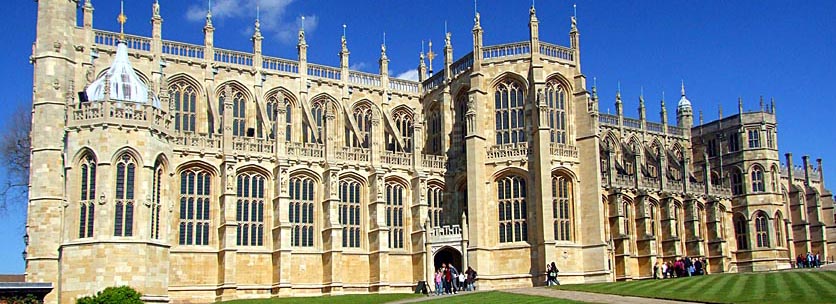 |
 |
|||
|
|
The chapel of St. George was made a Chapel Royal by King Edward III in 1348. The office of Dean was, till the reign of Henry IV, held by a dignitary designated by the name of "Custos." John Arundel, in Henry IV's reign, being the first to bear the title of "Dean." At first, the chapel was dedicated to St. Edward the Confessor, but gradually, owing to its connection with the Order of the Garter, St. George superseded the former patron saint. Later on, Henry VII had intended to make this chapel the tomb of his race, and the work was actually commenced, when the King turned his attention to Westminster. Henry VIII presented the incomplete extension to Wolsey and, about 1524, the Cardinal employed Benedetto of Florence to build a sumptuous sarcophagus of black marble, decorated with figures of copper gilt for his own use. After his disgrace, Henry intended to convert it for himself, but the money ran out and the magnificent metalwork lay neglected till the governorships of Colonel Venn and Colonel Whichcott. These functionaries sold various figures and images as old brass, and realised a very handsome sum by the transaction. In 1805, the marble sarcophagus was removed to St. Paul's, to mark the grave of Lord Nelson.
Part
9: Castle Treasures
|
|||
| © Nash Ford Publishing 2001. All Rights Reserved. | ||||




 In
1686, when King James II was misruling the land, he expended some £700 on
repairing the chapel and in solemnizing high mass. In
In
1686, when King James II was misruling the land, he expended some £700 on
repairing the chapel and in solemnizing high mass. In